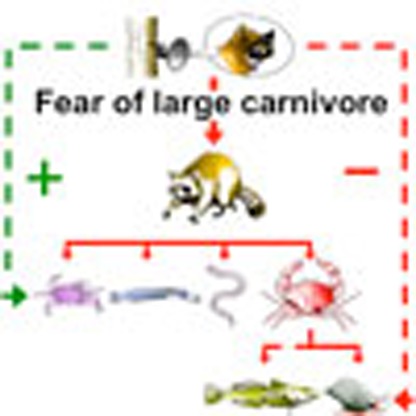- Record: found
- Abstract: found
- Article: found
Fear of large carnivores causes a trophic cascade

Read this article at
Abstract
The fear large carnivores inspire, independent of their direct killing of prey, may itself cause cascading effects down food webs potentially critical for conserving ecosystem function, particularly by affecting large herbivores and mesocarnivores. However, the evidence of this has been repeatedly challenged because it remains experimentally untested. Here we show that experimentally manipulating fear itself in free-living mesocarnivore (raccoon) populations using month-long playbacks of large carnivore vocalizations caused just such cascading effects, reducing mesocarnivore foraging to the benefit of the mesocarnivore's prey, which in turn affected a competitor and prey of the mesocarnivore's prey. We further report that by experimentally restoring the fear of large carnivores in our study system, where most large carnivores have been extirpated, we succeeded in reversing this mesocarnivore's impacts. We suggest that our results reinforce the need to conserve large carnivores given the significant “ecosystem service” the fear of them provides.
Abstract
 Top predators may indirectly influence ecological processes through fear-induced behavioural
changes in their prey. By experimentally manipulating this ‘landscape of fear', Suraci
et al. show that fear of large carnivores in a mesopredator can cause cascading effects
down the food web that benefit its prey.
Top predators may indirectly influence ecological processes through fear-induced behavioural
changes in their prey. By experimentally manipulating this ‘landscape of fear', Suraci
et al. show that fear of large carnivores in a mesopredator can cause cascading effects
down the food web that benefit its prey.
Related collections
Most cited references40
- Record: found
- Abstract: not found
- Book: not found
Mixed effects models and extensions in ecology with R
- Record: found
- Abstract: found
- Article: not found
Generalized linear mixed models: a practical guide for ecology and evolution.
- Record: found
- Abstract: found
- Article: not found